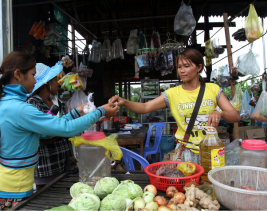Things You Need To Know
5 things you need to know about the global economy in 2023

Prospects for a robust global economic recovery remain dim. Stubborn inflation, rising interest rates and heightened uncertainties are creating obstacles for sustainable growth. The effects of the COVID-19 pandemic, the war in Ukraine, the climate crisis and rapidly shifting macroeconomic conditions, are clouding the economic outlook and challenging efforts to achieve the Sustainable Development Goals (SDGs). Here are 5 things you need to know about the global economy:
1. The slowdown in global growth in 2023 is likely to be less severe than previously expected. Global growth is now projected to slow from 3.1 per cent in 2022 to 2.3 per cent in 2023, an upward revision of 0.4 percentage points from the January forecast, which is mainly due to resilient household spending in developed countries and recovery of China’s economy. However, GDP per capita is projected to grow only slightly in Africa and Latin America and the Caribbean, reinforcing a long-term trend of weak economic performance.
2. The world economy faces the risk of a prolonged period of subpar growth. Medium-term prospects for global growth are clouded by scarring from the pandemic, the ever-worsening impact of climate change, and structural macroeconomic challenges, such as weak investment and mounting debt vulnerabilities. Slow income growth threatens to further undermine progress towards poverty eradication (SDG 1), ending hunger (SDG 2), promoting decent work and economic growth (SDG 8) and building resilient infrastructure and fostering innovation (SDG 9).
3. Inflation remains stubbornly high in many countries. While upward price pressures are expected to slowly ease, inflation in many countries will remain well above the comfort zone of central banks. Amid local supply disruptions, high import costs and market imperfections, food inflation is still high in most developing countries, disproportionately affecting women, children and the poor and exacerbating food insecurity.
4. Labour markets in many developed economies have continued to show resilience, with low unemployment rates and recurrent worker shortages. Employment rates are at record high levels in many developed economies and gender gaps have recently narrowed, in part due to increased use of telework and flexible work arrangements.
5. Global monetary tightening has exacerbated fiscal and debt vulnerabilities in developing countries. Rising borrowing costs and a strong dollar have increased debt-servicing burdens and debt default risks. Financing constraints will limit the ability of governments to invest in education, health, sustainable infrastructure, and energy transition to accelerate progress towards sustainable development.
Learn more in the mid-year update of the World Economic Situation and Prospects here.
Photo credit: Chhor Sokunthea/World Bank.
 Welcome to the United Nations
Welcome to the United Nations